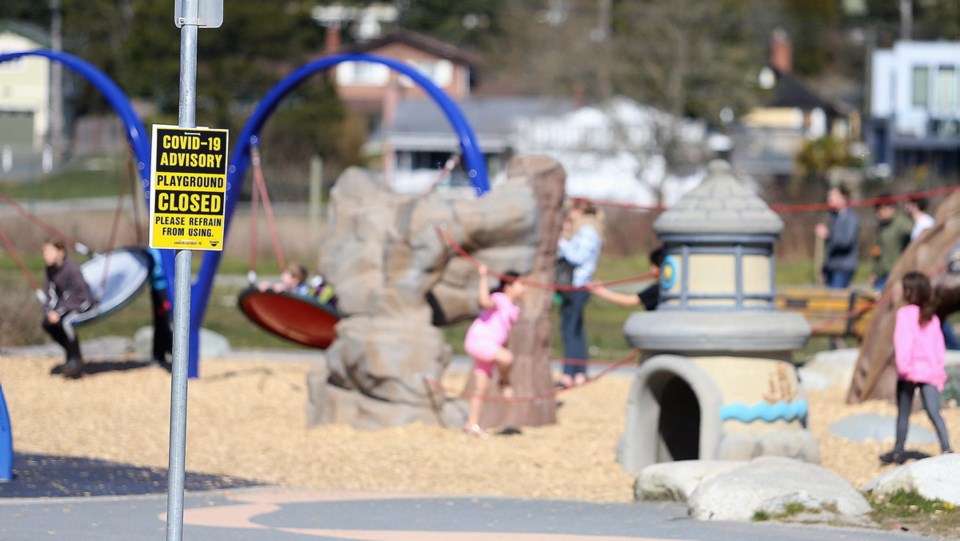So public schools in sa���ʴ�ý are closed indefinitely because of the real risk of the COVID-19 virus being spread by asymptomatic carriers — kids who catch the virus through contact, but who don’t know they are sick and carry the virus home and everywhere else kids go.
Closing schools makes sense if anybody is serious about defeating or even slowing the virus. As any teacher will tell you, schools, and specifically 80-square-metre classrooms jammed with 20 to 30 kids of any age, are living, breathing, sneezing, coughing Petri dishes for any bug that’s going around.
Outside playing involving inevitable physical contact (have you watched kids on a playground recently?) is hardly COVID-19 risk-free, either. Guidelines or no guidelines, physical contact is what kids do — always have and always will.
Back in school, the notion of separating kids in a classroom to meet COVID-19 avoidance guidelines when schools reopen might require more classrooms and more teachers if the guidelines are still in place. That’s simple math that might influence the when and how about reopening.
Understanding how or even if prolonged school closures will affect mid or long-term student success is something that worries parents. How much will be lost as the closure continues is also a guessing game, with too many other non-classroom factors involved to be able to provide a definitive analysis.
One way to at least make an educated guess about virus-triggered learning loss is to look at the boatload of research about summer learning loss.
A comprehensive review of the literature on this topic by Morgan Polikoff of UCLA’s Rossier School of Education the summarized several findings regarding summer learning loss.
On average, students’ achievement scores declined over summer vacation by one month’s worth of school-year learning.
Learning “declines” were sharper for math than for reading, and the extent of loss was larger at higher grade levels.
Importantly, most studies concluded that income-based reading gaps grew over the summer. Students from middle-income families tended to show improvement in reading skills while students from lower-income families tended to experience loss.
That might sound a little politically incorrect and hopefully, does not offend anybody, but that’s what the data on the correlation between student success and socio-economic inequalities has concluded for many years.
Some education commentators suggest that while public education has always been regarded as the great socio-economic equalizer the substitution of distance learning during this pandemic will, according to some observers, widen existing non-classroom driven inequities and might end up setting some children from marginalized communities back.
Those findings probably should be not all that surprising. The one thing researchers pretty much agree about is that the No. 1 influence on how kids think about learning is family.
Family attitudes to the value of public education plays a major role in shaping student attitudes toward school and, subsequently, student academic performance all over the world.
A second major theme across many of the studies reviewed is that the amount of instructional time is not so important as how that time is spent.
In other words, if teachers are not adequately providing for the needs of some learners, doing the same thing for longer periods of time will not help and making up for lost time by lengthening the school day or the school year, as has been suggested by some politicians here and in the U.S., will not make a difference if nothing else in the way of classroom practice changes.
That’s a major theme of the often-quoted 2005 Prisoners of Time commissioned by the U.S. National Education Commission on Time and Learning.
The length of the school year and even the school day varies considerably around the world.
Classroom time has been the focus of frequent attempts, both political and academic, to correlate lesson time with success on international assessments such as the PISA Program for International Student Assessment.
Those efforts have proven a waste of time if the correlations exclude considerations of cultural practices and beliefs about education.
Finland, always high on the results of international assessments, provides 190 school days per year with class sizes averaging 23 students who are in school for five hours each day with several breaks of 15 to 20 minutes spread throughout the day.
At the other end of the classroom time spectrum is China, also successful on international assessments. China, specifically Shanghai, requires 221 school days per year with a typical school day lasting from 7:30 a.m. to 5 p.m. with children often going home for lunch and family time during a two-hour lunch break.
There are other factors influencing Shanghai’s results, but that’s for another column.
Schools in sa���ʴ�ý will reopen in time and when they do sa���ʴ�ý’s teachers will pick up the pieces, probably more widely distributed than normal after a break, and put it all together again as they do each year.
But this time will require patience; patience from political masters, patience from parents and patience from all the rest of us.
Geoff Johnson is a former superintendent of schools.
- - -
To comment on this article, send a letter to the editor.
• Email: [email protected]
• Mail: Letters to the editor, sa���ʴ�ý, 2621 Douglas St., Victoria, sa���ʴ�ý V8T 4M2.
Letters should be no longer than 250 words and may be edited for length, legality or clarity. Avoid emailing your letter as an attachment. Please include contact information; we require your first and last name and the municipality where you live for the letter to be considered for publication.
��



